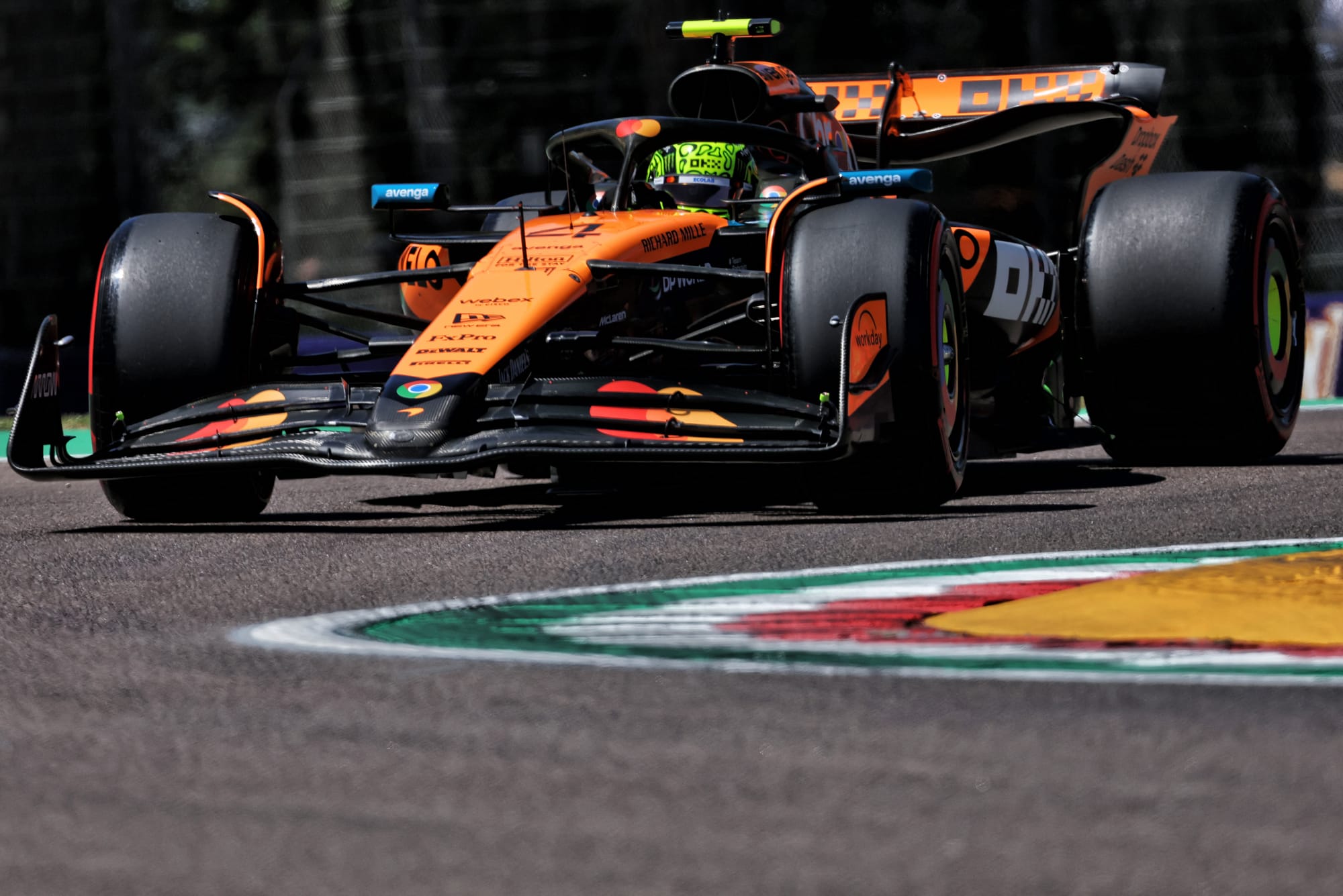Fresh intrigue about the cause of the performance swing between Red Bull and McLaren in Formula 1 has opened up with it emerging that the FIA issued two separate technical directives ahead of the Emilia Romagna Grand Prix.
Just a fortnight on from McLaren dominating the Miami Grand Prix thanks to its better tyre management, the tables were turned at Imola on Sunday as it was Red Bull that held the advantage by being more on top of the tyres.
While a host of factors are understood to have played their part in what happened – which includes the track layout hurting McLaren, Max Verstappen running in clean air, and upgrades on Red Bull's RB21 – another fascinating element has since come to light.
Senior sources within Red Bull have not ruled out another factor at play – and that is of two technical directives (TD) issued by the FIA in the build-up to the Imola race potentially playing a role in what happened by slowing McLaren.
It is this which is understood to have triggered Red Bull team principal Christian Horner to suggest after the race that the shock of Verstappen's win was not of the pace advantage his squad had.
"We were sort of more surprised about McLaren's lack of performance," he said.
FIA communications
The Race has learned that the issue revolves around communications on two separate topics that the FIA made in the days before the Emilia Romagna Grand Prix.
The first TD relates to the measurement of skid block materials and the way that some teams had found clever ways to pass the probe tests that measure the depth of the plank after the race.
The TD clarified the type of materials that can be used in the area of the skids, plus how they could be mounted, in a bid to stop teams trying to find ways to run closer to the limit but still pass the minimum depth test.
Any team that had been exploiting this area in the past to help run their car lower to the ground would have had to lift it up for the Imola race.
A second TD did not change any of the FIA's interpretations of regulations but was instead the publication of a communication between the governing body and Red Bull relating to some questions about devices that could potentially be allowed to help with tyre cooling.
It is understood that the FIA made clear that a host of design ideas relating to the use of water cooling of wheel assemblies and tyres, plus other systems, would not be allowed.
This type of dialogue between teams and the governing body, where ideas are suggested only to be ruled out, is commonly used to smoke out concepts that rivals could be running to exploit grey areas of the regulations.
With the FIA publishing to all teams its guidance to Red Bull on what it felt would not be allowed, this would rule out any of its competitors being able to continue running anything covered in these documents.
McLaren 'not involved'

From Red Bull's viewpoint, the timing of the intervention of the FIA on two key areas of car performance coming ahead of a weekend where its main rival did not enjoy its previous level of dominance certainly seemed to be more than coincidence.
However, from McLaren's perspective, it is absolutely adamant that the TDs had no role at all in what played out at Imola.
Team insiders are clear that the skid block clarification did not force it to make any change to its car nor the way the MCL39 was run – as it felt that this TD was potentially aimed at other competitors.
Furthermore, on the tyre cooling issue, the FIA has already examined McLaren's wheel assembly and brake system several times – which included a detailed physical inspection after the Miami Grand Prix.
At all times, the FIA has declared it is satisfied with what McLaren is doing with sources suggesting that its concept is "clever." This means that it was running at Imola exactly the same way as before.
McLaren team boss Andrea Stella has repeatedly suggested that rivals are looking in the wrong areas when it comes to pointing fingers at what his squad is doing - with it already having faced suspicions over flexi wings, water in tyres and mini-DRS.
Speaking at Imola last weekend, Stella said: "For us, it's good news when our rivals get their focus – rather than on themselves – onto some of the aspects that allegedly are present in our car, and that effectively are not even present.
"And certainly, even if they were – let's say, flexi-wings like a front wing deflection, like everyone else – it has nothing to do with the reason why McLaren is very competitive.
"So, I hope that in the future there will be more of these kinds of sagas because it means that our rivals keep focusing on the wrong things. And this is, for us, just good news. It's just helping our quest."
The next focal point
The fresh intrigue over the pre-Imola TDs comes just a fortnight ahead of the Spanish Grand Prix, where a TD relating to flexi wing designs comes into force – prompting teams to stiffen their designs in a bid to pass more stringent load tests.
Many teams have suggested that the changes required to the wings, especially for those squads that have exploited aero elasticity the most, could trigger a noticeable shake up in form.
Ferrari team principal Fred Vasseur said recently: "For sure everybody will have a new front wing in Barcelona - by definition and by regulation. I think it will be perhaps a reset of the performance of everybody."



